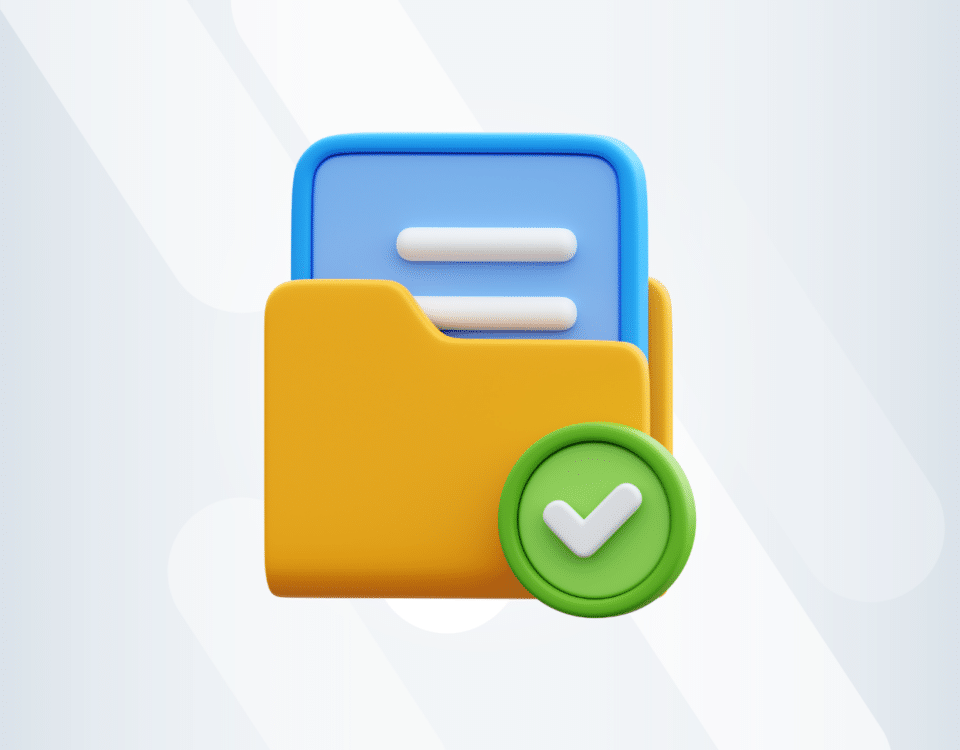Construction Tips, News & Best Practices
Construction Snag Lists: (Almost) Everything You Need to Know in 2023
Snagging lists – a fairly strange term to those not familiar with it.
But it’s a crucial process in the construction process. It allows owners and contractors to find any imperfections in the construction and fix them before completing the project.
This mini-guide covers almost everything you need to know about snag lists (or punch lists if you’re based in the US).
What is snagging?
Snagging is a process carried out before the practical completion of a project, i.e. when the project is ready for inspection. In the most basic terms, a snag is a minor flaw that remains after the contractor has finished a project. They must remedy them before handing over the project.
What is the difference between a punch list and a snag list?
The difference between a punch list and a snag list is that punch list is a term used outside of the United Kingdom.
The term snagging list is standard in the United Kingdom and Ireland (as well as Australia and New Zealand) and is always accepted.
The confusion between the two terms appears to arise most often when foreign - such as American contractors or construction companies - are used and thus use the terminology they are attuned to.
A punch list is a sort of to-do list that details to a contractor what needs to be done to the house for it to meet the contractor or buyer's expectations. It gets its name from the old-fashioned method of punching holes in a list.
A snag list is a list created during a snagging survey. When a contractor's role in a project is complete, they must remedy any ‘snags’ before handover to the contractor, developer or house owners.
What to include on a snagging list
If you're building your snag list, use this list to ensure you cover all the nooks and crannies. This list is divided into categories to make your inspection easier.
Walls and ceiling
- Is the plaster smooth and even?
- Are there any unfinished screw pops or glaring flaws?
- Do all the walls look straight and square?
Windows
- Check frames for paint, scratches, and damages.
- Are the windows opening and closing as expected? Check for any creaks.
- Is the glass scratch and paint-free?
- Are the locks on the windows working perfectly?
- Are the windows neatly sealed? Check for gaps between the frame and the wall.
Floors
- Are they level?
- Are there any cracks or broken tiles?
- Have the edges been sealed?
- Do the floorboards creak?
Doors and doorframes
- Do the doors open and shut correctly?
- Are the locks on the doors working?
- Is the gap between the door and its frame even all around?
- Do hinges work without squeaking?
- Are the handles working correctly?
- Are door stops fitted where required?
Stairs
- Is the staircase secured properly?
- Are the treads levelled?
- Are all handrails secure, stable, and damage-free?
- Do the treads creak when stepped on?
- Is there enough headroom?
Paintwork
- Are all painted areas blemish-free?
- Is it clean, and are there any unsightly paint runs?
- Have the underside of all window sills and other corners painted?
Pipework
- Are all pipes secure and free from leaking?
- Have the walls been mended where pipes enter and exit?
- Have units been cut neatly to allow access to pipework?
- Are soil pipes and vent pipes properly connected?
Lighting
- Do all lights work?
- Are wet area light switches compliant?
- Have all light switches been fitted correctly and uniformly?
Plumbing
- Do all of the taps work?
- Does the toilet flush?
- Are there any unnecessary dead legs visible?
- Are water tanks and pipework properly insulated?
Electrical
- Do all electrical sockets work?
- Are all electrical sockets properly fitted?
- Is the fuse box fitted correctly and fully labelled?
- Are there smoke alarms present? Do they work?
Who is responsible for managing the snagging process?
Snagging can't be allotted to just one person. It would be impossible for one individual to ensure all items on the snag list are crossed or "punched" off.
The snagging process involves several key stakeholders, including owners, general contractors, subcontractors, and architects.
Owner
The owner's primary responsibility is to be present at the end of the project and check the work. As the project draws to a close, the owner should visit the job site to ensure everything meets their expectations.
This is an excellent time for them to inspect the work, ask questions, and share any final instructions or requests. These items are added to the snag list.
Main Contractor
The contractor plays several roles in the snag list process. Most importantly, they act as a liaison between the owner, subcontractors, and architect. Their role includes:
- To fill the snag list with the owner's requests and comments.
- To examine pending work and add any other items to the snag list.
- To subcontract the remaining tasks and responsibilities.
- To determine a project completion date and communicate that information to all stakeholders.
- To ensure the snag list has been completed before the final construction walkthrough.
Subcontractors
Subcontractors will receive a list of tasks from the main contractor and should ideally complete each task within the time frame specified. Subcontractors should also be prepared to answer any questions about these line items.
There may also be instances where the subcontractor does not complete a task exactly as specified on the snag list.
This could be because the request was not viable, and they used their expertise and best judgement to complete the task efficiently. In such cases, the subcontractor should be ready to explain how and why.
Architect
The architect must confirm that what was designed was executed during the final construction review.
Architects are also responsible for approving any changes in construction design that were required before the final walkthrough, which must be accounted for during the final evaluation.
Snagging in construction projects
Snagging list is prepared mainly by the appropriate certifying authority architect or contract administrator during inspection for the practical completion of a building project.
Every line item mentioned in the snag list must be addressed before issuing a certificate of practical completion.
All items on the snagging lists must be meticulously documented, and pertinent information must be communicated to the parties involved.
As evidence, the communication must be documented in writing, along with a photograph of the issues.
Using software here can be helpful as it makes the entire process much smoother and more streamlined.
More often than not, this is the format of a snag list:
- Snag item number
- The precise location of the snag
- Type of issue
- Details of the issue
- Date the problem was identified
- The person responsible for fixing the issue
- Status of the snag
A contractor must prepare their snagging list as the project progresses to address issues upfront and not keep them for the last minute. The status of each snag item must be either outstanding or completed.
Snagging for New Builds
You'd assume that a new build will be in pristine condition and devoid of snags. However, that's not always the case.
The home builder must inspect and repair any cosmetic flaws before closing on the sale. However, it is unlikely that they will notice everything.
Minor defects or "snags" caused by poor workmanship or equipment are common in newly constructed properties.
Here are the ten most common snags reported from an analysis of snagging surveys of homeowners and construction companies:
- Faulty window and door installation
- Poorly executed paintwork
- Unfinished elements, especially electrical sockets or light switches
- Missing grout or chipped tiles
- Leaking pipes
- Disconnected or missing ducts to fans or vents
- Substandard plastering
- Badly installed insulation
- Damage to external brickwork
- Clogged or blocked guttering
How to improve your snagging process?
A snag list is the foundation of any successful construction project. Short projects may be able to manage all the snag work on an Excel sheet or paper. But, large projects may have lengthy snag lists with items that can get lost on paper or in a spreadsheet.
There are methods to make the snag list process easier for everyone, including yourself.
1. Document everything as you go
A good practice is to take notes as you work. Although it may be tempting to wait until the project is complete to create a snag list, doing so will allow your team to work more efficiently.
By creating a snag list from the beginning, you establish the process and standards for everyone involved in the project. "Snag-as-you-go" is a practice of documenting issues and flaws as they arise.
It demands a little more effort to get started and regular updates on work tasks and progress, but it helps you deliver a close-to-perfect final project.
2. Give tasks to the right people
To improve efficiency, assign each task to the appropriate person. Often, items may be added to a snag list in a rush. And while everyone understands that it must be completed at the soonest, no one knows who is in charge of the item.
Every task on a snag list must be assigned to a specific person, no matter how big or small. If the job requires more than one person, assign distinct roles.
For example, if there are three subcontractors, who among them must take ownership of the assignment?
It is critical always to be explicit about roles and responsibilities because you can never assume everyone is on the same page.
3. Clarify exactly what you're asking
Be explicit with your demands. Assigning the right tasks to the right people is only half the job. The second half is to ascertain they're clear on what is expected of them once those tasks are assigned.
The more comprehensive and detailed a snag list, the easier its execution. For example, have you specified the due date of all the tasks? Have you highlighted which tasks are a priority?
This is where having a ready-made snag list template to fill out comes in handy.
You can be confident you're being thorough and have covered everything. However, the more information you provide, your project will likely succeed.
4. Take photos as evidence
Does your team know which bedroom you're referring to when you say "rear bedroom"? Can everyone identify the chips or stains on the snag list?
You may have described the issue to the best of your ability, but that doesn't guarantee that it'll immediately make sense to the listener.
There's a good chance the subcontractor may fail to recognise the seriousness of the problem.
Photographs here can help reduce confusion and explicitly express a problem's what, how, where, and why of a problem.
Furthermore, photos provide your team with proof of the existing issues and the steps taken to resolve them. This will improve overall efficiency and explain why specific actions were taken.
5. Make the process easier and faster with software
You can improve the snagging process by using software. Even though pen, paper, and spreadsheets can accomplish the task, you may end up with more work and stress on your plate.
With large projects, it can get challenging to keep track of all the moving parts in a snag list with pen and paper, and it isn't easy to provide essential project stakeholders with real-time updates.
Even a spreadsheet is no match for the current software alternatives. Thanks to cloud-based building snag list software, everyone is always kept informed and accountable.
You might also like
February 29, 2024 • 7 min read
Utilizing the human-first approach to construction projects to drive higher results.
July 3, 2023 • 6 min read
8 Best Construction Drawing Management Software (2023): A Comprehensive Guide
Find all the information you need about the construction drawing management software tools available on ...June 14, 2023 • 6 min read
The 11 Best PlanGrid Alternatives (2023)
Looking for a great alternative to PlanGrid software? Check out the 11 best construction software tools ...June 14, 2023 • 4 min read
How to win at CIS 340 and make taxes a breeze
CIS 340 is a legal obligation for contractors. But getting it right isn’t straightforward. Want ...






